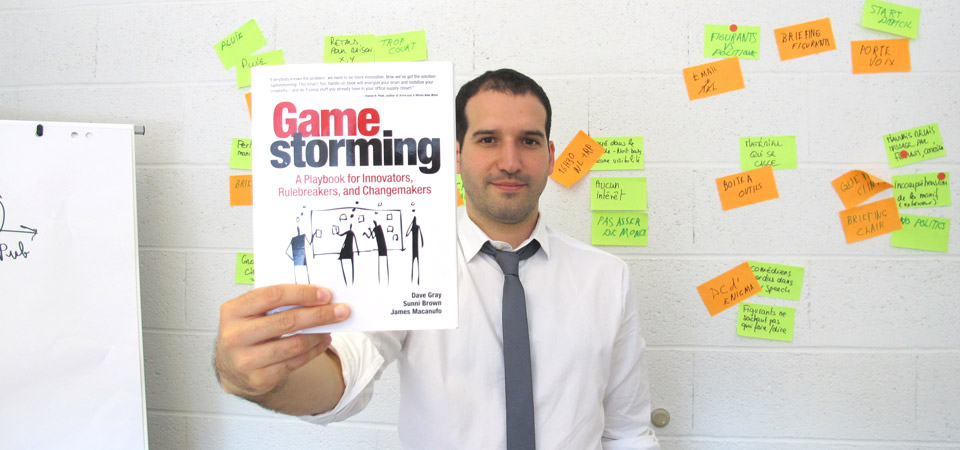
Game storming – D. Gray, S. Brown, J. Macanufo
If this book were only a compilation of brainstorming ideas, it would already be worth a read. There are over 60 exercises that are explained and illustrated with examples. The 3-page-long summaries are to the point and explain the main principle in just a few minutes. For those who want to learn more, additional sources are elegantly offered at the end of each chapter.
The main strength of this compilation is its first 50 pages. Brainstorming is not a process, because it has a goal. A process is a sequence of actions that lead to a goal, while brainstorming allows for new horizons and new solutions. The goal is thus wider. The typical mistake that companies make is to use brainstorming as a team-building exercise rather than as an R&D tool.
This confusion often comes from a lack of understanding of what an efficient brainstorming session can potentially bring. In order to find innovative solutions, one has to know the problem, find numerous potential solutions, and then select the ones that can be developed. Instead of conducting one exercise, one should imagine at least three. The authors are expert in visual thinking, and suggest a three-step method:
1. Opening
Put the participants at the heart of the problem. Address what lies at the periphery, such as targets, competition, substitute products, etc.
2. Exploration
Let numerous options emerge, even the craziest ones, without limitation except for the framework that was set at the beginning of the exercise.
3. Conclusion
Set up a system that enables to choose which of the proposed options should be developed. This can be done with a matrix or an evaluation system for time and cost, for example.
Too often, we try to brainstorm by addressing all three steps in one single exercise. It often becomes a game that at best puts some options on the table; but part of the team will not understand what is at stake, and the other part of the team will not understand why their ideas have not been developed. Game-storming avoids this situation by sorting exercises according to their step, which helps the facilitator. When you think about it, doesn’t the whole creative process operate like this? In an advertising agency, the creative director listens to the briefing, seeks additional information, tries different things out, and presents the best options.
Thanks to Amazon recommendation system for suggesting this book to me.
CONTACT
Do you have a question about a topic in advertising, marketing or business development?
Write to olivier@enigmaprod.ch and I’ll recommend a book on this topic.